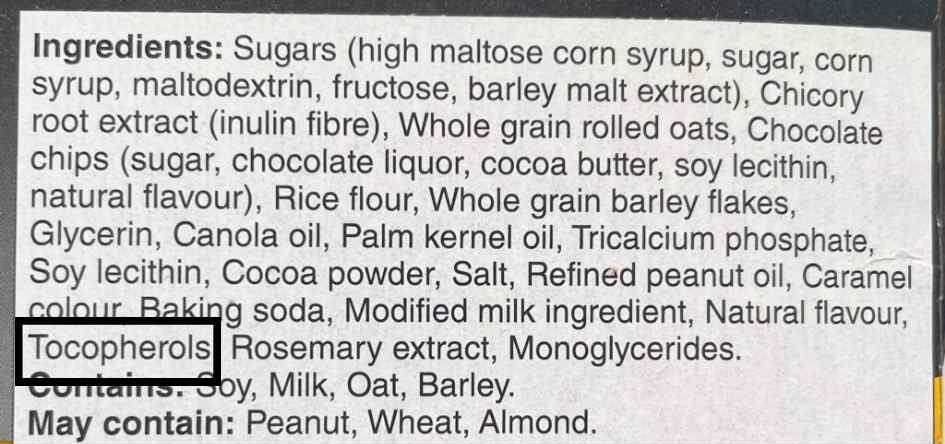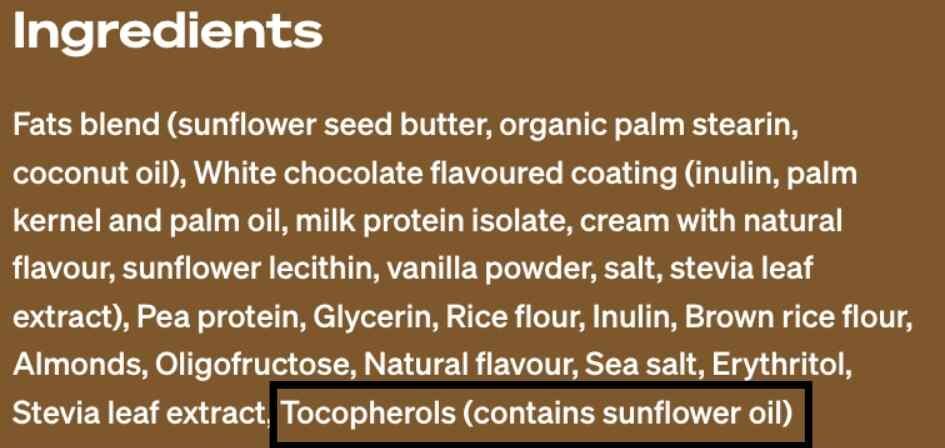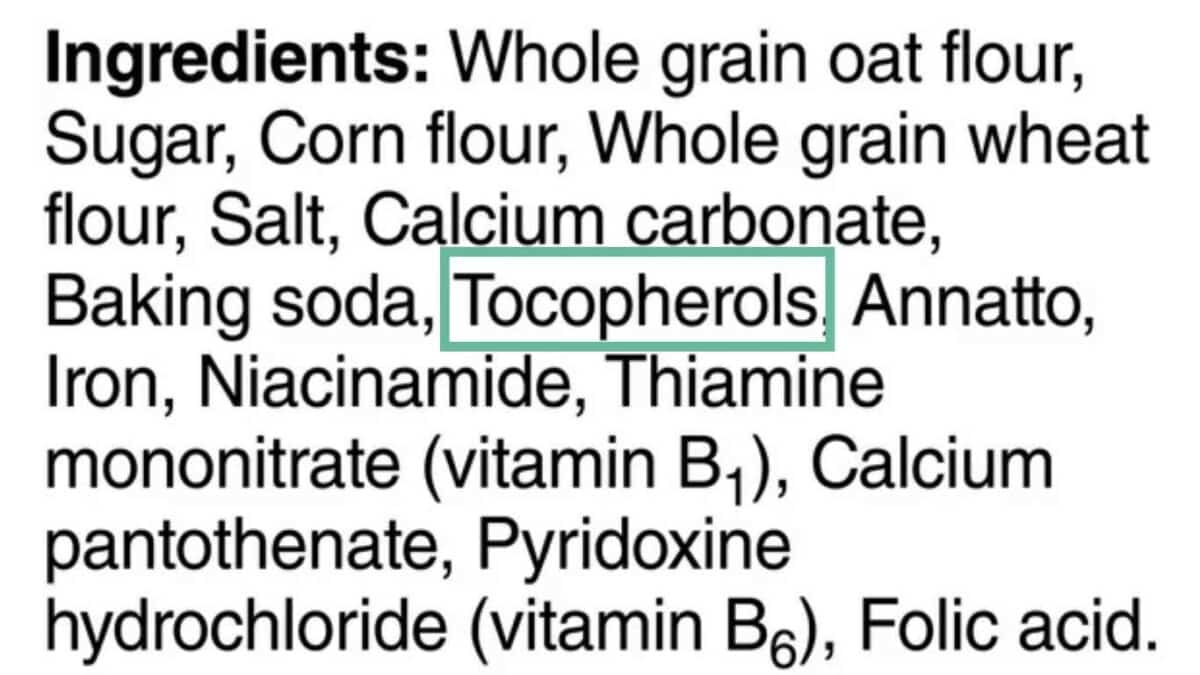You may have come across this ingredient in your favourite cereal or protein bar and wondered – what are tocopherols?! As part of our Ingredient 101 series, we’re bringing you everything you need to know about this common preservative, including what tocopherols are, their sources, common uses, and health implications.
What are tocopherols
Tocopherols are forms of vitamin E, which have strong antioxidant properties. Vitamin E has eight fat-soluble chemical forms, four of which are tocopherols. For this reason, the terms tocopherols and vitamin E are often used interchangeably. Due to their antioxidant properties, tocopherols are commonly used in packaged foods to protect the fats in the product and prolong shelf life.

How are tocopherols made for use in the food industry?
Vitamin E is naturally present in many foods, including vegetable oils, wheat germ, sunflower seeds, almonds, and hazelnuts. The tocopherols added to packaged foods as a preservative are most often extracted from natural food sources, such as soybean or sunflower oil. There are many methods that may be used for extracting tocopherols, including Esterification, Saponification, Distillation, Chromatography, and Crystallization.
These methods use a variety of physical and chemical approaches to extract tocopherols from the original food source. An example of a physical extraction method may be applying heat, sound energy, or shaking of the liquid. Chemical approaches may include adding a chemical solvent to extract or purify the tocopherols from the original source. Most extraction methods will use a variety of both physical and chemical methods to extract and purify tocopherols for use in the food industry.
Any processing of a nutrient to extract it from a whole food has the potential to impact the functionality of the nutrient. In the case of tocopherols, however, the antioxidant properties remain readily available after processing, which is why they work effectively as a preservative.
Where are tocopherols found?
In the United States and Canada, Tocopherols are “generally recognized as safe” (also known as GRAS). They are approved as a preservative for use in a variety of foods and are commonly found in cereal, protein bars, oils, and infant formulas.

Tocopherols and health
Research on tocopherols has demonstrated a potential benefit of tocopherol intake on heart health, cancer prevention, eye health, and dementia. These benefits are attributed to the strong antioxidant properties of vitamin E. However, it’s important to note that this research uses high doses of tocopherols from naturally occurring food sources, such as plant oils, or tocopherol supplements.
Our daily intake of tocopherols from processed food sources, where very small amounts of tocopherols are added as a preservative, is likely much lower than the amount studied in oil or supplement form. For this reason, you may be less likely to see health benefits from the small amount of tocopherols in your protein bar, compared to incorporating whole food sources in your regular diet.
Bottomline:
In summary, tocopherols are forms of vitamin E with strong antioxidant properties. Due to their antioxidant properties, they are commonly used in the food industry as a preservative. Though tocopherols have been studied for potential health benefits related to heart disease, cancer prevention, and brain health, the amount we consume from packaged foods is likely much smaller than the doses used in research.
Other Ingredient reviews you may be interested in:
- Lecithin – Food Ingredient Review
- What are Natural Flavours and Should You Avoid Them?
- Is Maltitol Bad for you? Ingredient Review
Sources:
- Neutraceuticals and Health Care, Chapter 14 – Tocopherol (2022).
- Ahsan H, Ahad A, Siddiqui WA. A review of characterization of tocotrienols from plant oils and foods. J Chem Biol. 2015 Jan 20;8(2):45-59. doi: 10.1007/s12154-014-0127-8. PMID: 25870713; PMCID: PMC4392014.
- Lim, H., Woo, S., Kim, H.S., Jong, S.-K. and Lee, J. (2007), Comparison of extraction methods for determining tocopherols in soybeans. Eur. J. Lipid Sci. Technol., 109: 1124-1127. https://doi.org/10.1002/ejlt.200700060
- Quek, Siew Young & Chu, Boon-Seang & Baharin, Badlishah. (2007). Commercial extraction of vitamin E from food sources. The Encyclopedia of Vitamin E. 140-152.
- List of Permitted Preservatives, Health Canada (2022).
- Vitamin E Factsheet, National Institutes of Health, U. S. department of health & human services (2021).
- Tocopherols, Listing of Specific Substances Affirmed as GRAS, Food and Drug Administration Department of Health and Human Services (2023).


